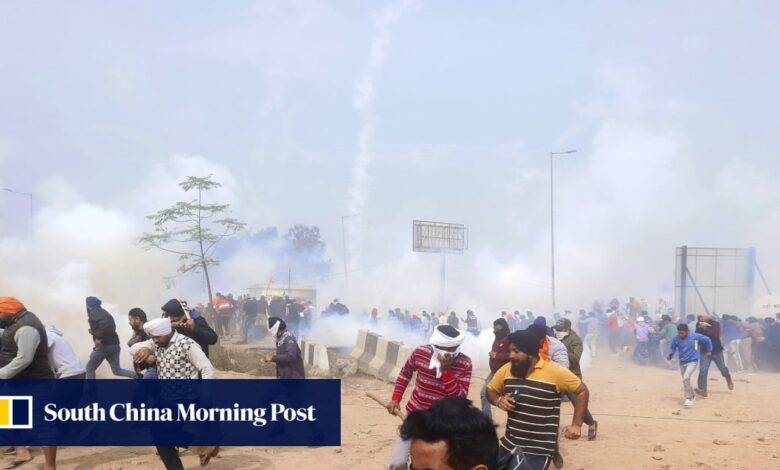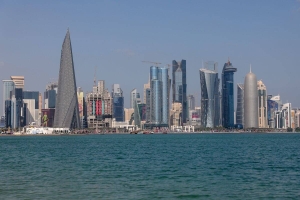India locks down capital as farmers mass over crop prices

[ad_1]
Police in New Delhi and surrounding states have set up metal barriers, concrete barricades and barbed wire to block city access roads and halt thousands of farmers marching to demand guaranteed crop prices and loan waivers, three years after anti-reform demonstrations that choked the Indian capital for months.
Footage broadcast on national television showed tear gas being used to disperse protesters in the state of Haryana, several hours from the capital, as farmers travel in from surrounding regions on tractors. Other images showed demonstrators facing off against police stationed behind fortified barriers.
Protest organisers and government officials held a nearly five-hour long meeting on Monday evening, according to farmer group leaders. But with no agreement, thousands of cultivators are still moving towards Delhi, where they aim to congregate at Jantar Mantar, an 18th-century observatory and traditional protest point.

“The talks failed, which means farmers will be marching towards Delhi,” said Shiv Kumar Sharma, a farmer from the central state of Madhya Pradesh, who attended the meeting.
With a general election just weeks away and loathe to see a repeat of farm protests that began in late 2020 and lasted for close to a year, Haryana officials on Monday ordered restrictions in the areas near the state border. Delhi police, meanwhile, have banned gatherings, rallies and marches across the city for 30 days.
“The government always wants to find the solution to any problem through talks, and that is how we should resolve this issue,” Arjun Munda, minister for agriculture and farmer welfare, told reporters late on Monday. “We will try to protect the rights of all farmers and the people of this country.”
One of the key demands from farmers – dating back to protests three years ago and still unresolved – is a minimum price for each crop, a system which officials have said in the past will be a struggle to adopt beyond key staples. However, rural voters are vital in Indian elections, and mass expressions of discontent will be difficult for the government to ignore as it seeks a third term in power.

The government expects the farming sector to grow at 1.8 per cent for the financial year ending in March, lower than an average growth of over 4 per cent in the last seven years.
Another of the core demands from protesters is debt forgiveness. In 2020-2021, the government said outstanding agricultural loans from commercial banks amounted to more than 18.4 trillion rupees (US$220 billion), in comparison with 12 trillion rupees in 2015-2016, with the number of indebted farmers’ accounts also growing – to more than 100 million from 69 million.
Many of the protesting growers are from key northern farming states like Punjab, Haryana and Uttar Pradesh, in part because of proximity to their land.
Farmers’ groups have also called for a national strike on Friday, alongside trade unions, women’s organisations and students.
[ad_2]
Source link





